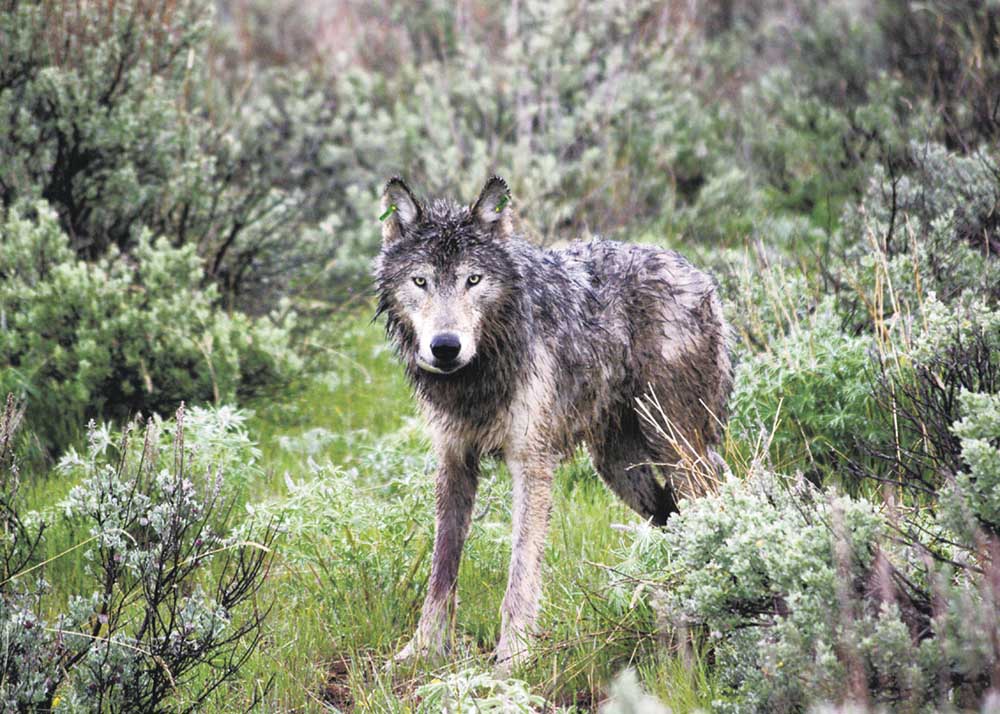Officials approve culling two wolves after eight cattle were attacked in NE Oregon
Published 11:45 am Monday, October 4, 2021

- Wolves attacked eight cattle in the Ukiah Valley of northeastern Oregon. Wildlife managers are attempting to determine which pack the wolves were from.
UKIAH — Oregon wildlife officials have authorized killing up to two wolves in the Ukiah Valley south of Pendleton where eight calves were attacked in a three-day span.
The first depredation report came on Sept. 25, when a ranch hand discovered one dead and six injured calves in a 200-acre private pasture. All were about six months old and weighed between 450 and 550 pounds. Two of the injured livestock were later euthanized.
Another calf was also found dead on Sept. 28 in the same pasture. In each case, the animals had pre-mortem bite marks suggesting they were attacked by a predator. Their injuries consisted of tooth scrapes, punctures and tears that were consistent with wolves.
The Oregon Department of Fish and Wildlife issued a permit on Oct. 1 allowing the rancher to kill up to two wolves on a portion of the private land, located in the Heppner and Ukiah wildlife management units.
The permit is restricted to shooting wolves from the ground, and expires Oct. 31, when the two wolves are killed or when the cattle are removed from the area — whichever comes first.
While ODFW has chalked up the depredations to wolves, the agency does not know which pack caused the injuries.
The Ukiah pack, which roams parts of southern Umatilla and Union counties, was not in the area, according to GPS collar data. ODFW is now monitoring the nearby Fivemile pack to see if it is utilizing territory farther east than biologists originally thought.
In addition, the agency says recent public reports have indicated a new group of wolves within 10 miles southeast of where the depredations happened.
“ODFW has identified an initial area around the presence of the depredating wolves in the Ukiah Valley area to address associated risk to livestock,” the agency said in a statement. “ODFW staff are monitoring the region to confirm resident activity by new wolves as well as confirm the current movements of the Fivemile pack.”
Under the state’s Wolf Conservation and Management Plan, wolves in Eastern Oregon may be subject to lethal control if they have two confirmed depredations in a nine-month period.
The plan also stipulates that ranchers must be using appropriate non-lethal deterrents before lethal control may be considered. Prior to the first depredation, ODFW says the rancher had removed dead animal carcasses from the landscape to avoid inadvertently luring wolves to the pasture, and was continually monitoring the health of the cow herd.
After the first depredation, the rancher has had employees stay with the cattle each night, adding a human presence to further prevent wolves from returning.
Already this year, ODFW has issued three permits to kill wolves for “chronic depredation” in Eastern Oregon.
The agency shot two wolf pups from the Lookout Mountain pack in Baker County in August, and then killed three more wolves from the pack — including the alpha male — in September after livestock depredations did not stop.
ODFW also approved killing one wolf from the OR-30 group after the predators attacked two calves and five sheep in June and July near Meacham, Ore. That permit eventually expired without any wolves being shot.
Rodger Huffman, a Union County rancher and co-chairman of the Oregon Cattlemen’s Association wolf committee, said ranchers have long been frustrated with the state’s management of wolves. He said the number of depredations confirmed by the agency is lower than the actual losses producers face.
“We have a wolf management and conservation plan, and conservation has clearly been the first and highest priority,” Huffman said. “We’re just asking very respectfully that at least management be 50% of the equation in this.”
Environmental groups, on the other hand, staunchly oppose killing wolves and continue to fight to overturn the federal government’s decision to take wolves off the list of endangered species.
On Sept. 15, the Biden administration announced it would review the status of gray wolves in the northern Rocky Mountains, which could potentially restore endangered species protections in Idaho, Montana, Wyoming and the eastern one-third of Oregon and Washington.
Oregon’s minimum known wolf population is 173 as of the most recent count at the end of 2020.



